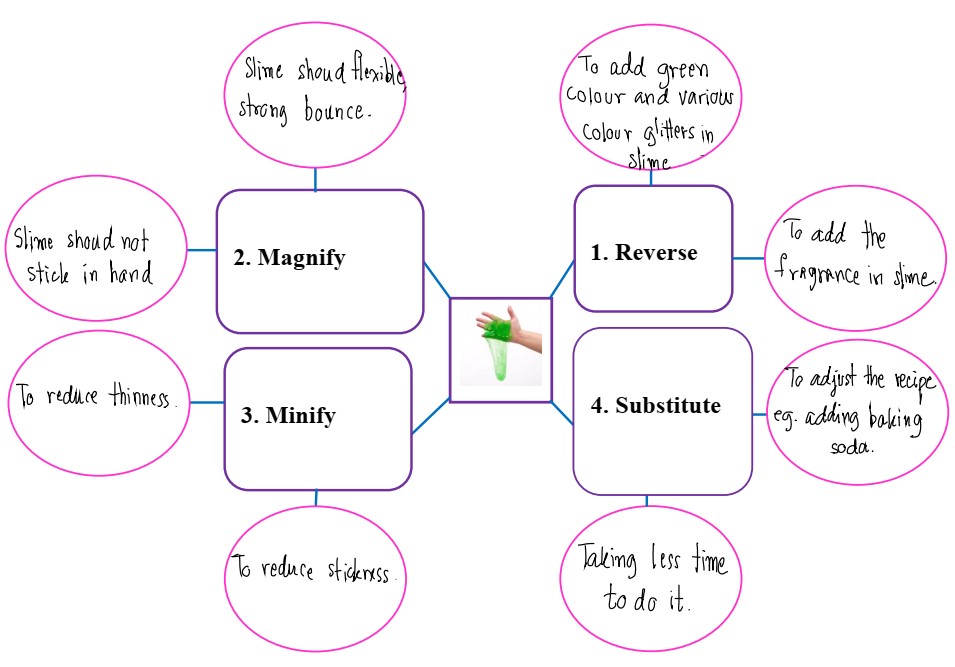การประยุกต์ใช้การตรวจสอบรายการของออสบอนในการสอนสะเต็มเพื่อส่งเสริมความคิดสร้างสรรค์
Main Article Content
Abstract
Sirporn Kruatong
รับบทความ: 14 มกราคม 2564; แก้ไขบทความ: 9 สิงหาคม 2564; ยอมรับตีพิมพ์: 18 กันยายน 2564; ตีพิมพ์ออนไลน์: 16 เมษายน 2565
บทคัดย่อ
การวิจัยนี้มีวัตถุประสงค์เพื่อพัฒนาความสามารถออกแบบแผนการจัดการเรียนรู้แบบสืบเสาะหาความรู้ตามแนวทางสะเต็มศึกษาของนิสิตครูวิทยาศาสตร์ การอบรมเชิงปฏิบัติการการประยุกต์ใช้การตรวจสอบรายการของออสบอนในการสอนสะเต็มศึกษาเพื่อส่งเสริมการสอนความสร้างสรรค์ รวมถึงการตรวจสอบความคิดสร้างสรรค์และความมั่นใจในตนเองของนิสิตครูวิทยาศาสตร์ต่อการสอนสะเต็มเพื่อส่งเสริมความคิดสร้างสรรค์ ผู้มีส่วนร่วมการวิจัยเป็นนิสิตครูวิทยาศาสตร์ชั้นปีที่ 3 จำนวน 41 คน กำลังศึกษาหลักสูตรการผลิตครูในประเทศไทย เครื่องมือที่ใช้ในการวิจัยนี้ ได้แก่ 1) แบบประเมินแผนการจัดการเรียนรู้แบบสืบเสาะหาความรู้ตามแนวทางสะเต็มศึกษา 2) แบบทดสอบความคิดสร้างสรรค์ของกิลฟอร์ด และ 3) แบบสอบถามเกี่ยวกับความมั่นใจในตนเองต่อการสอนสะเต็มเพื่อส่งเสริมความคิดสร้างสรรค์ ผลการวิจัยระบุว่า คะแนนเฉลี่ยความคิดสร้างสรรค์ของนิสิตครูวิทยาศาสตร์หลังเรียนสูงกว่าก่อนเรียนที่ระดับนัยสำคัญ 0.01 การอบรมเชิงปฏิบัติการส่งผลเชิงบวกต่อความ สามารถออกแบบแผนการจัดการเรียนรู้แบบสืบเสาะหาความรู้ตามแนวทางสะเต็มศึกษา ผลการวิจัยแสดงให้เห็นว่า นิสิตครูวิทยาศาสตร์ส่วนใหญ่สามารถบูรณาการสะเต็มศึกษา (80.49%) และระดับการสร้างสถานการณ์หรือบริบทสะเต็ม (65.85%) อยู่ในระดับสูง การวิเคราะห์การจัดกิจกรรมสะเต็มแสดงให้เห็นถึงสัดส่วนร้อยละของนิสิตครูวิทยาศาสตร์สามารถเสนอกิจกรรมการออกแบบเชิงวิศวกรรมที่ท้าทายด้วยตนเอง เพื่อปลูกฝังความคิดสร้างสรรค์ โดยให้นักเรียนให้ทำงานผ่านกระบวนการทำงานที่ยืดหยุ่นและมีวิธีการแก้ปัญหาอย่างหลากหลาย (ร้อยละ 43.90) และสามารถเตรียมเครื่องมือสำหรับการประเมินความคิดสร้างสรรค์อย่างชัดเจนและเหมาะสม (ร้อยละ 73.17) นอกจากนี้นิสิตครูมีความมั่นใจในตนเองต่อการสอนสะเต็มเพื่อส่งเสริมความคิดสร้างสรรค์หลังการอบรมเชิงปฏิบัติการสูงกว่าก่อนการอบรบเชิงปฏิบัติการที่ระดับนัยสำคัญ 0.01
คำสำคัญ: ความคิดสร้างสรรค์ การสอนสะเต็ม การตรวจสอบรายการของออสบอน นิสิตครูวิทยาศาสตร์
Abstract
This research aimed to develop science student teachers’ ability to design STEM inquiry–based lessons through 6–week workshop using Osborn’s checklist in STEM teaching to promote creative thinking. The science student teachers’ creative thinking, STEM lesson plan for promoting creative thinking, and self–confidence in STEM teaching were investigated. Research participants were 41 science student teachers who are third–year students in the Teacher Education program in Thailand. The research instruments consisted of 1) a STEM inquiry–based lesson plan assessment form, 2) Guilford’s creative assessment test and 3) a questionnaire of science student teachers’ self–confidence on STEM teaching. The research result indicated that the science student teachers’ creativity was higher after the workshop at the significant level of 0.01. The workshop has positively affected science student teachers’ ability to design STEM inquiry–based lessons. The results revealed that science student teachers was able to integrate STEM in their lesson plan (80.49%) and create STEM situations/contexts (65.85%) at high–level. Analysis of STEM activity showed that science student teachers were able to propose their own engineering design challenges that could cultivate creativity by leading students to work through the flexible process with variant solutions (43.90%). They were able to provide assessment for creative thinking clearly and appropriately (73.17%). Their self–confidence on STEM teaching after the workshop was higher at the significant level of 0.01.
Keywords: Creative thinking, STEM teaching, Osborn’s Checklist, Science student teacher
Downloads
Article Details

This work is licensed under a Creative Commons Attribution-NonCommercial 4.0 International License.
References
Arao, T., Ishikawa, S., Murakami, M., Abe, K., Maejima, Y., and Makino, T. (2010). Heavy metal contamination of agricultural soil and countermeasures in Japan. Paddy and Water Environment 8(3): 247–257.
Bunkrong, D. (2017). Analysis of the educa-tion management approach with driving education to Thailand 4.0. Walailuk Abode of Culture Journal 17(2): 1–25. (in Thai)
Bybee, R. (1993). An instructional model for science education. In Developing Biological Literacy. Colorado Spring, CO: Biological Sciences Curriculum Study.
Guilford, J. P. (1967). The Nature of Human Intelligence. New York: McGraw–Hill.
Guo, J., and Woulfin S. (2016). Twenty–First Century Creativity: An Investigation of How the Partnership for 21st Century Instructional Framework Reflects the Principles of Creativity. Retrieved from https://www.researchgate.net/publication/304905972_Twenty_First_Century_ Creativity_An_Investigation_of_How_the_Partnership_for_21st_Century_ Instructional_Framework_Reflects_the_Principles_of_Creativity, September 12, 2018.
Hajeekhadae, A. (2017). Effect of STEM Edu-cation Approach on Biology Achievement, Scientific Creativity and Instructional Satisfaction of Grade 11 Students. Master Thesis of Education in Teaching Science and Mathematics. Songkla: Prince of Songkla University. (in Thai)
Higgins M. J. (1996). Innovate or evaporate: Creative techniques for strategists. Long Range Planning 29(3): 370–380.
Joseph, J. D., Taylor, J., Hardinge, G. B., and Brown, E. F. (2011). The Virginia Demonstration Project–A Summative Assess-ment. Retrieved from http://www.asee. org/public/conferences/1/papers/1186/download, September 8, 2014.
Kruatong S. (2018). Development of Science Student Teachers’ Ability in Preparing STEM Inquiry–based Lessons. Doctoral Dissertation in Science Education. Nakhon Pathom: Kasetsart Univertity Kampaengsean Campus. (in Thai)
Kruatong, S., Nantarat, K., Kulthida, N. Tussatrin, W. (2017). Inquiry–based STEM activities created by science student teachers in a teaching method course. Proceedings of the 7th International Conference on Science & Mathematics Education. Penang, Malaysia: Seameo Recsam.
Larkin, T. L. (2015). Creativity in STEM education: Reshaping the creative project. Proceedings of International Conference on Interactive Collaborative Learning (ICL) (pp. 1184–1189). Florence, Italy.
Newton, L., and Newton, D. (2010). Creative thinking and teaching for creativity in elementary school science. Gifted and talented international 25(2): 111-124.
Osborn, A. (1988). Applied Imagination. 3rd ed. New York: Scribners.
Osborn, A. F. (1957). Applied Imagination: Principles and Procedures of Creative Problem–Solving. New York: Scribner.
Plucker, J. A., Waitman G. R., and Hartley, K. A. (2011). Education and creativity. In Runco, M. A., and Pritzker, S. R. (Eds.), Encyclopedia of Creativity (2nd ed.) (pp. 435–440). USA: Academic Press.
Pollard, V., Wesson, H. R., and Young K. (2018). Creative teaching in STEM. Teaching in Higher Education 23(2): 178–193.
Poon, C. Y. J., Au, C. Y. A., Tong, M. Y. T., and Lua, S. (2014). The feasibility of enhancement of knowledge and self–confidence in creativity: A pilot study of a three–hour SCAMPER workshop on secondary stu-dents. Thinking Skills and Creativity 14: 32–40.
Silvia, P. J., Winterstein, B. P., Willse, J. T., Barona, C. M., Cram, J. T., and Hess, K. I. (2008). Assessing creativity with divergent thinking tasks: Exploring the reliability and validity of new subjective scoring methods. Psychology of Aesthetics, Creativity, and the Arts 2: 68–85.
Sripanlom, T. (2020). Learning through Community–based Project: Enhancing Undergraduate Students' Creativity on Natural Chemistry Products. Doctoral Dissertation (Science Education). Nakhon Pathom: Kasetsart University Kampaengsean Campus. (in Thai)
Tsupros, N., R. Kohler, R., and Hallinen, J. (2008). STEM Education in Southwestern Pennsylvania: Report of a project to identify the missing components. Retrieve from https://www.cmu.edu/gelfand/documents/stem-survey-report-cmu-iu1.pdf, September 8, 2014.
